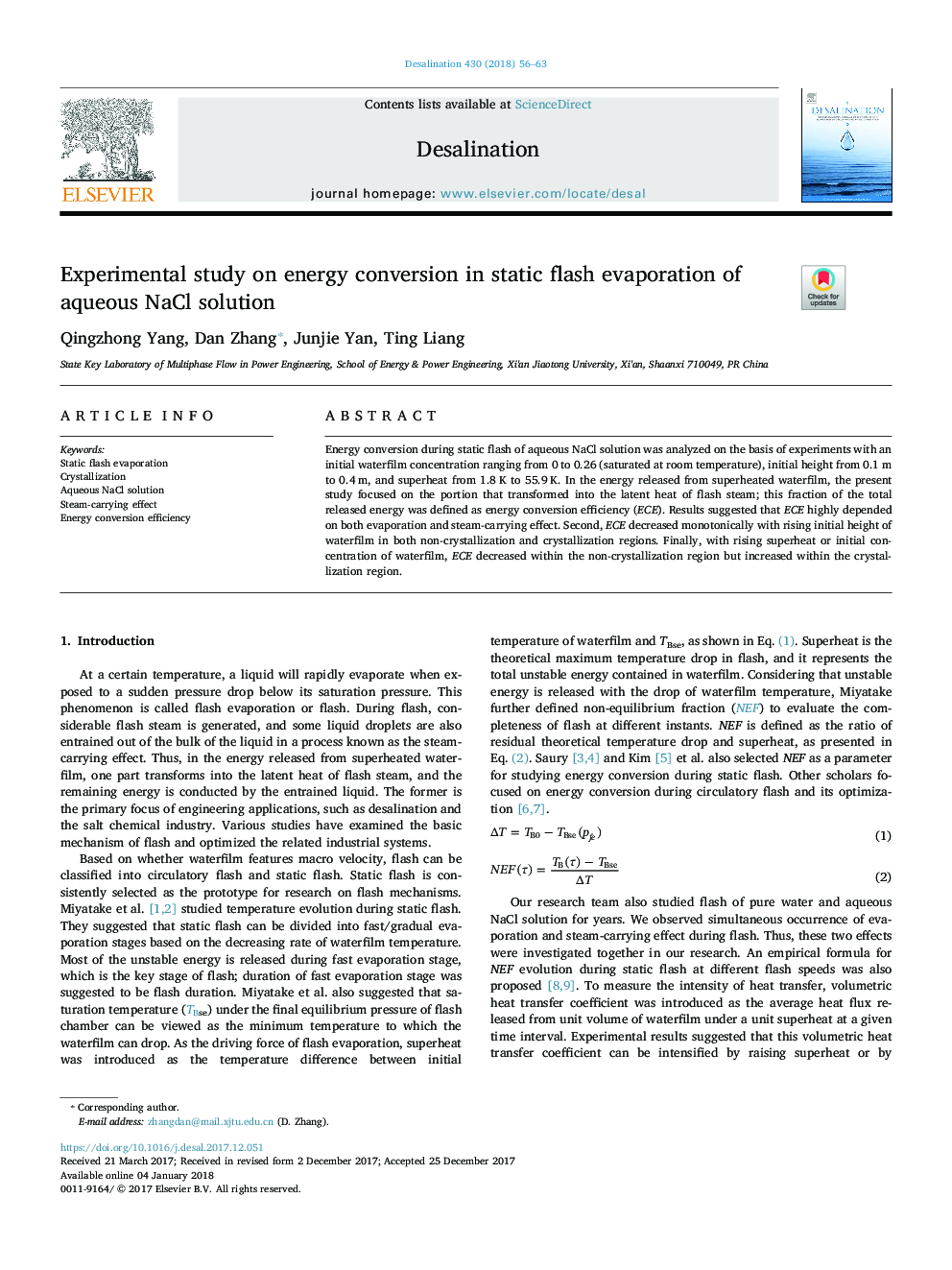| Article ID | Journal | Published Year | Pages | File Type |
|---|---|---|---|---|
| 7008049 | Desalination | 2018 | 8 Pages |
Abstract
Energy conversion during static flash of aqueous NaCl solution was analyzed on the basis of experiments with an initial waterfilm concentration ranging from 0 to 0.26 (saturated at room temperature), initial height from 0.1Â m to 0.4Â m, and superheat from 1.8Â K to 55.9Â K. In the energy released from superheated waterfilm, the present study focused on the portion that transformed into the latent heat of flash steam; this fraction of the total released energy was defined as energy conversion efficiency (ECE). Results suggested that ECE highly depended on both evaporation and steam-carrying effect. Second, ECE decreased monotonically with rising initial height of waterfilm in both non-crystallization and crystallization regions. Finally, with rising superheat or initial concentration of waterfilm, ECE decreased within the non-crystallization region but increased within the crystallization region.
Related Topics
Physical Sciences and Engineering
Chemical Engineering
Filtration and Separation
Authors
Qingzhong Yang, Dan Zhang, Junjie Yan, Ting Liang,
